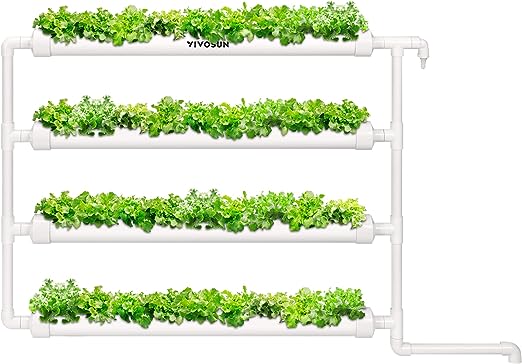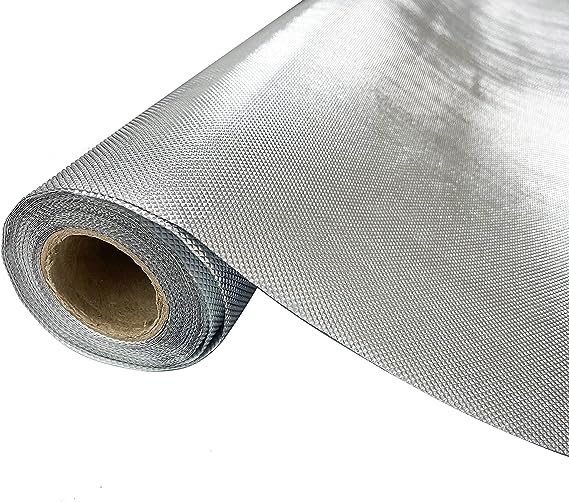Aquaponics is gaining popularity as an innovative method of food production that combines hydroponics and aquaculture. This symbiotic growing technique allows plants and fish to thrive together in a recirculating system. While traditionally done on a large scale, aquaponics can also be adapted for small spaces, making it an accessible option for urban dwellers and small-space gardeners. With some creative solutions, anyone can grow their own food sustainably using aquaponics, even with limited room.
Introduction
For city residents and those with tiny yards or balconies, space constraints can be a barrier to growing food at home. However, various aquaponics techniques can maximize productivity in a miniaturized setup. This allows urban farmers to leverage vertical space or choose compact plant varieties to cultivate an abundance of organic produce and fish.
Aquaponics is the ideal answer for small-space food production because the system’s components can be scaled down while still functioning effectively. With innovative aquaponics solutions, you can grow intensively in a condensed area for a high-yield harvest.
Going Vertical
One of the most effective approaches for small-space aquaponics is utilizing vertical space through stacking components or building upward. Here are some popular vertical growing solutions:
Wall-Mounted Grow Towers
Wall-mounted towers are containers or pipe structures attached to a building interior or exterior to grow vertically. This takes advantage of unused vertical real estate for increased planting area.

Image source: Aquaponics Innovations & Research
Stacked Bucket Systems
Food-grade buckets can be filled with gravel and stacked vertically while piping connects them together. This modular, customizable system is great for small footprints.

Image source: Aquaponics Beginners’ Guide
Hanging Gardens for Vining Plants
Vining crops like tomatoes, cucumbers, beans, and peas can grow on vertical strings, meshes, or nets attached to ceilings or rafters. This allows them to save space by climbing upward.

Image source: Aquaponics Innovations & Research
Utilizing Balconies, Patios, and Stair Landings
Any outdoor or semi-enclosed area can become a vertical aquaponics garden, from balcony railings to patio fencing to stairway banisters. Get creative!
Compact Varieties
In addition to going vertical, another small-space solution is choosing compact, miniature, or dwarf varieties of plants. Here are some options:
Miniature Vegetables and Fruits
Many compact vegetable and fruit varieties are ideal for tight spots. Here are some top picks:
- Bush tomatoes
- Cherry tomatoes
- Salad greens
- Radishes
- Baby carrots
- Mini bell peppers
- Dwarf melons
- Container blueberries
- Columnar apple trees

Image source: Aquaponics Fish & Plant Selection
Bush Tomatoes vs Vining Tomatoes
Bush tomatoes stay compact, while indeterminate vines sprawl. Go with bush tomatoes for small spaces.

Image source: Aquaponics Fish & Plant Selection
Salad Greens, Baby Carrots, and Dwarf Trees
Greens, carrots, and dwarf fruit trees produce a large harvest in a tiny footprint.

Image source: Aquaponics Fish & Plant Selection
Supplementary Lighting
Lack of light is a common challenge in small indoor spaces. But the right lighting setup can stimulate abundant growth.
Full Spectrum LED Grow Lights
LEDs provide full spectrum light that mimics sunlight. Position lights above vertical gardens or over seedlings and greens.

Image source: Aquaponics Innovations & Research
Reflective Sheeting
Reflective sheeting on walls amplifies available light. Combine with adjustable light hanger sets for optimal coverage.

Image source: Aquaponics Innovations & Research
Community Collaboration
Getting involved with community organizations can provide space, resources, and knowledge for small-scale aquaponics:
- Partner with schools to set up classroom aquaponics. Kids learn while producing food.
- Join or volunteer at a community garden organization. Share costs and labor.
- Check with community centers about starting aquaponics education programs.
Getting creative with vertical and compact growing techniques allows anyone to become an aquaponics micro-farmer, even in apartments or tiny homes. With the right small-space solutions, limited room doesn’t have to limit your food production. What aquaponics techniques will you try in your small footprint? Let the innovations begin!
For more aquaponics tips and guides to maximize your small-space system, explore the resources at Aquaponics Master. Our website offers sustainable gardening advice, DIY instructions, aquaponics kits, and an engaged community to help you get growing. Discover the possibilities of small-space aquaponics!


